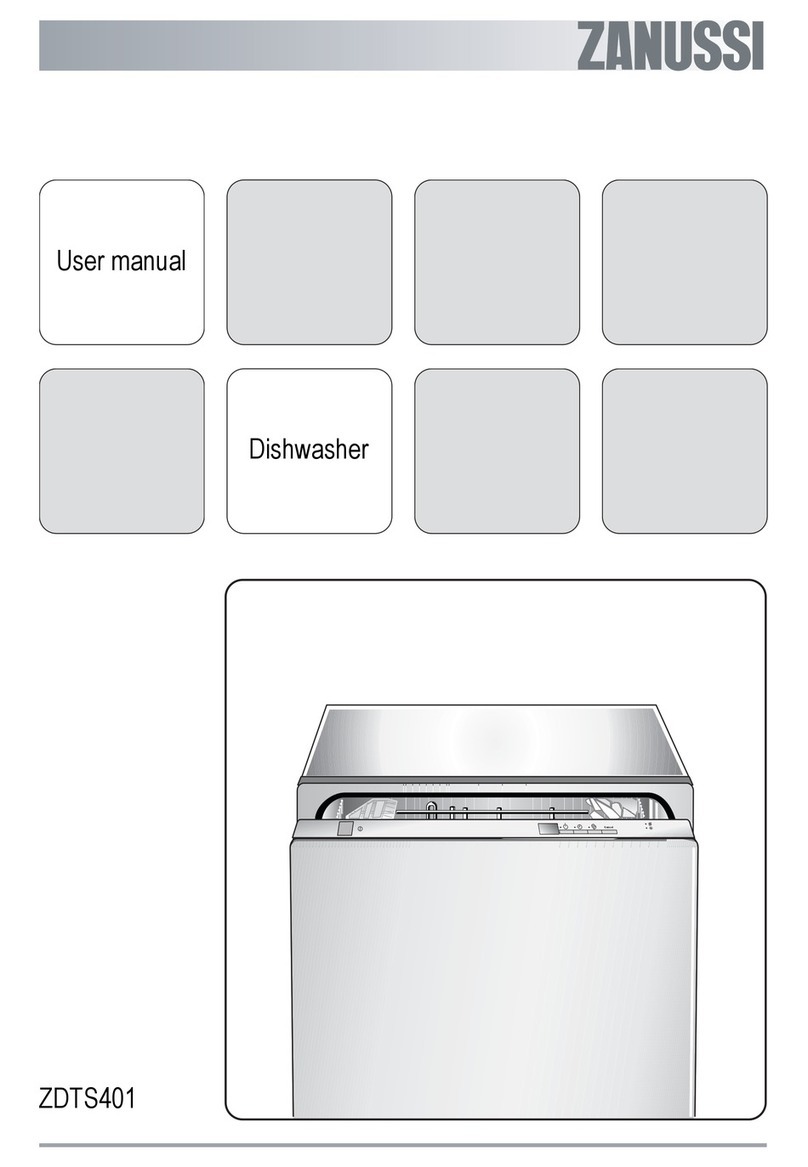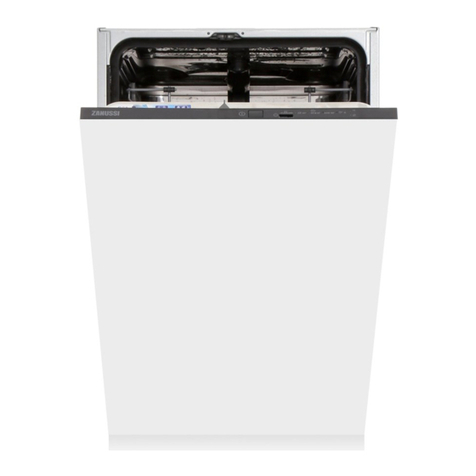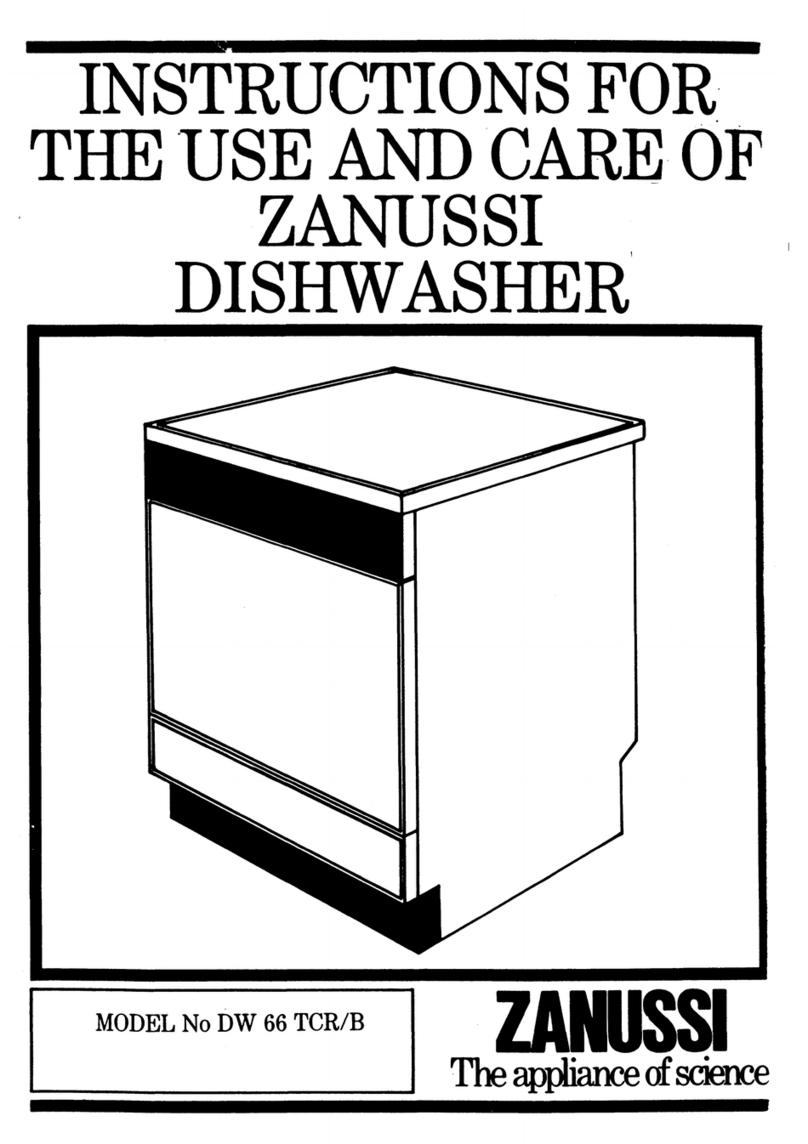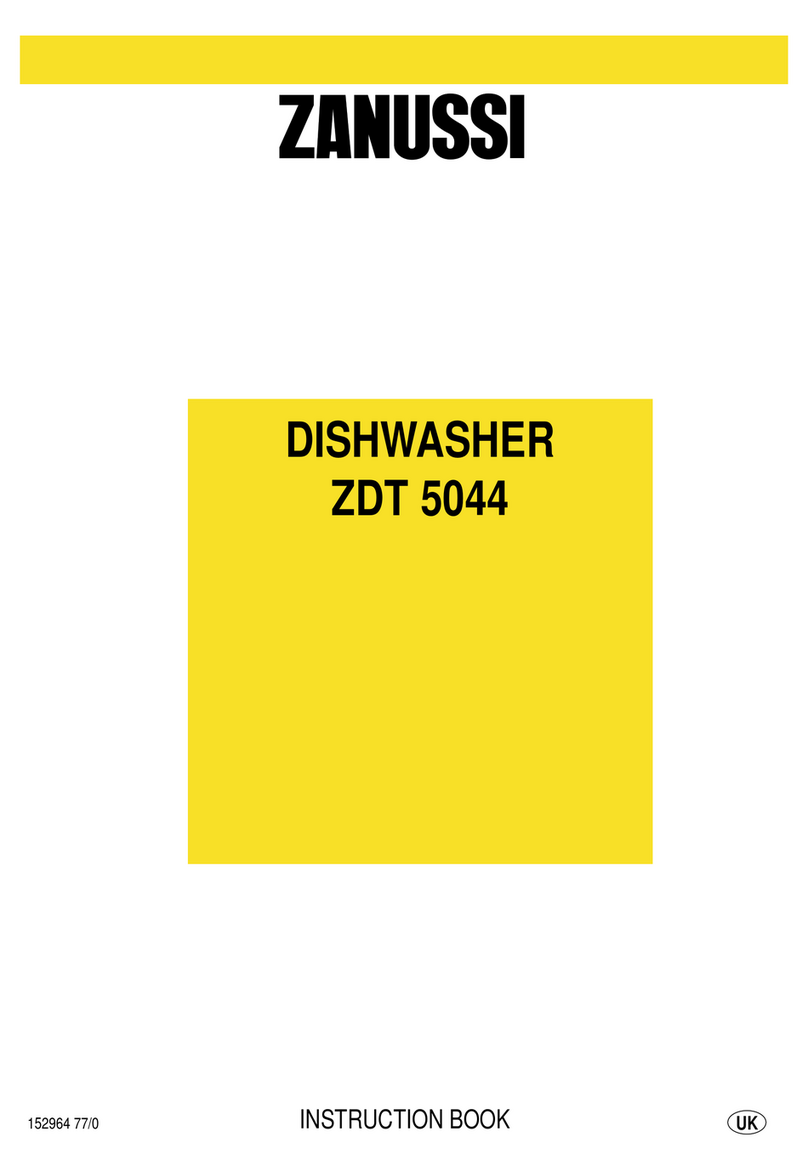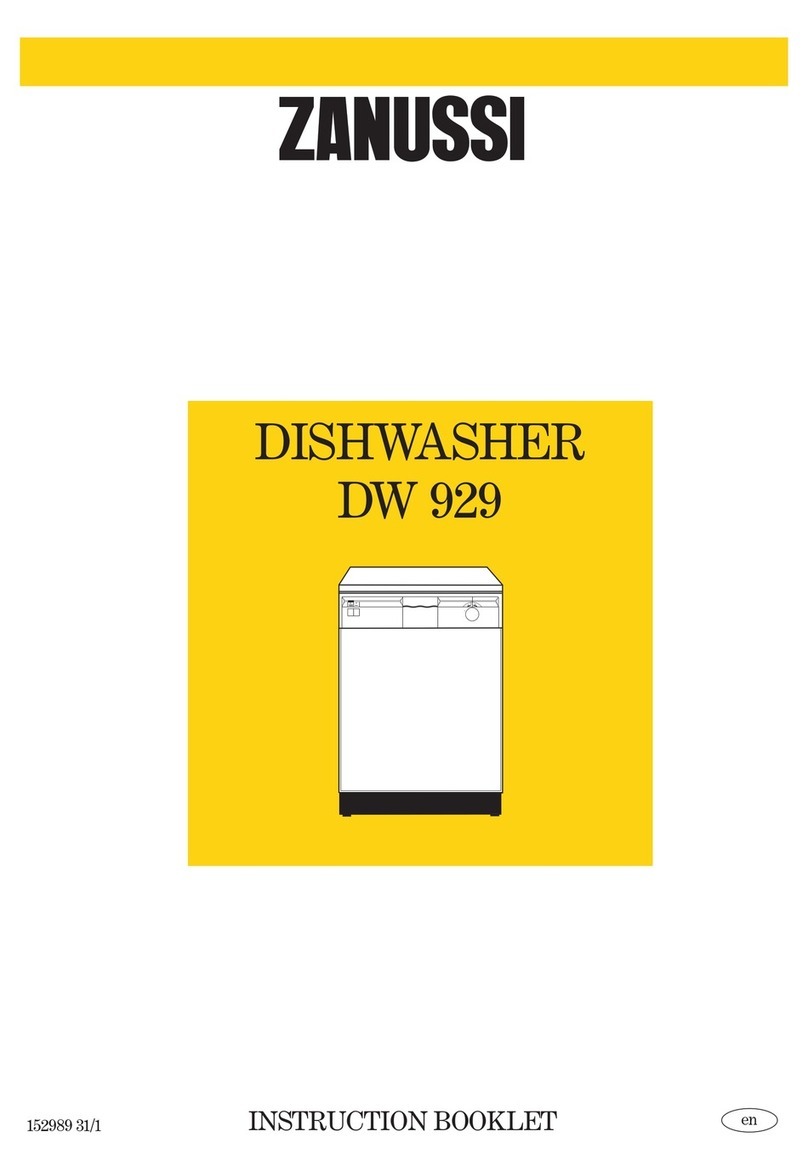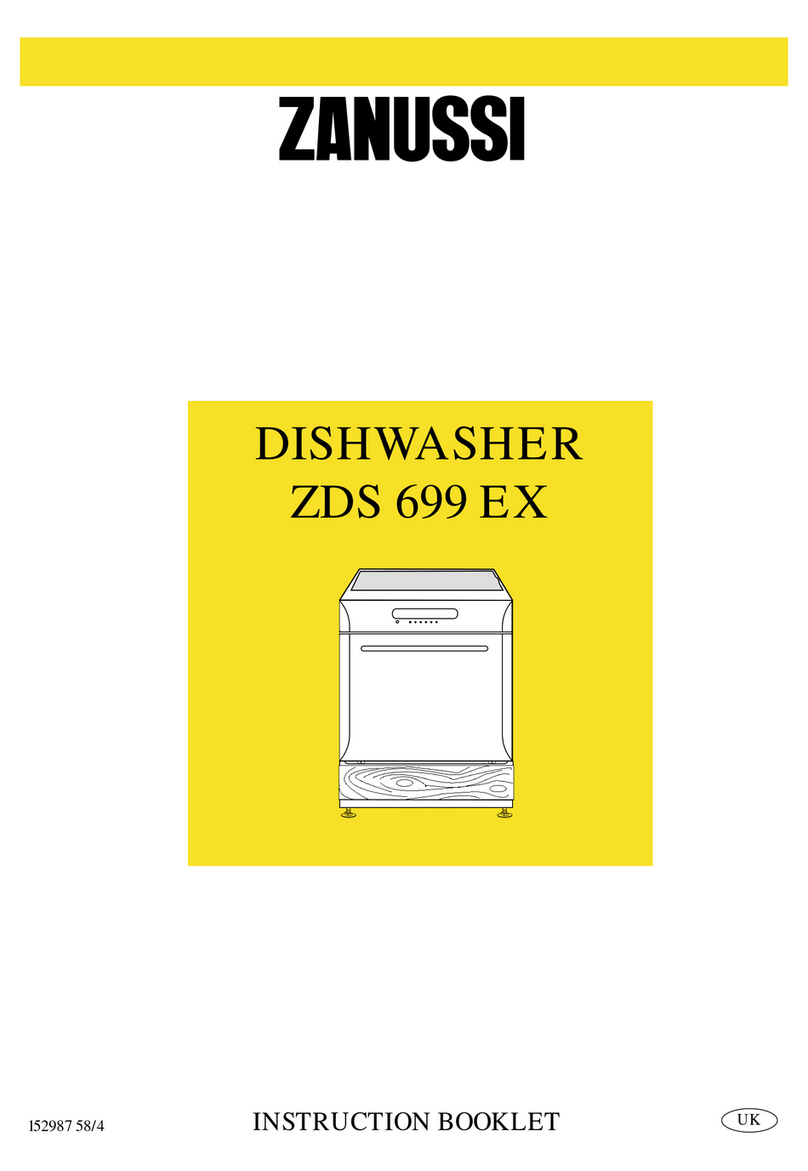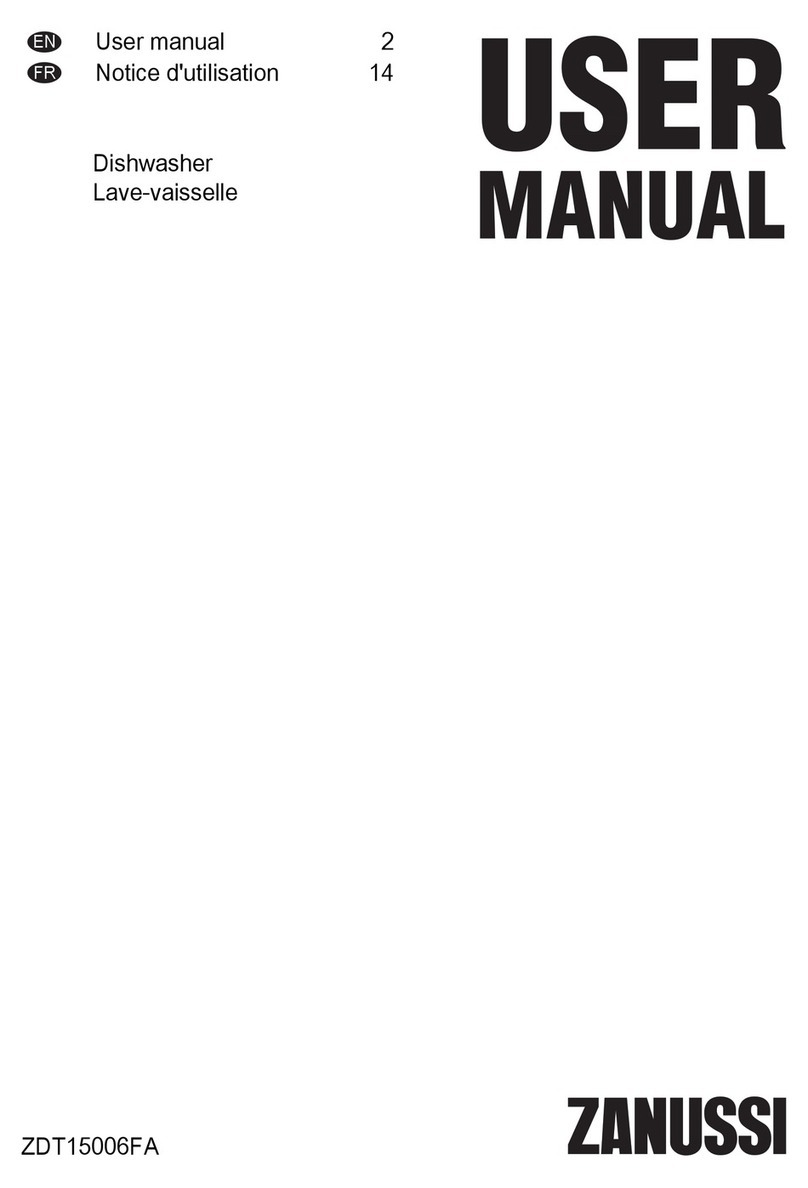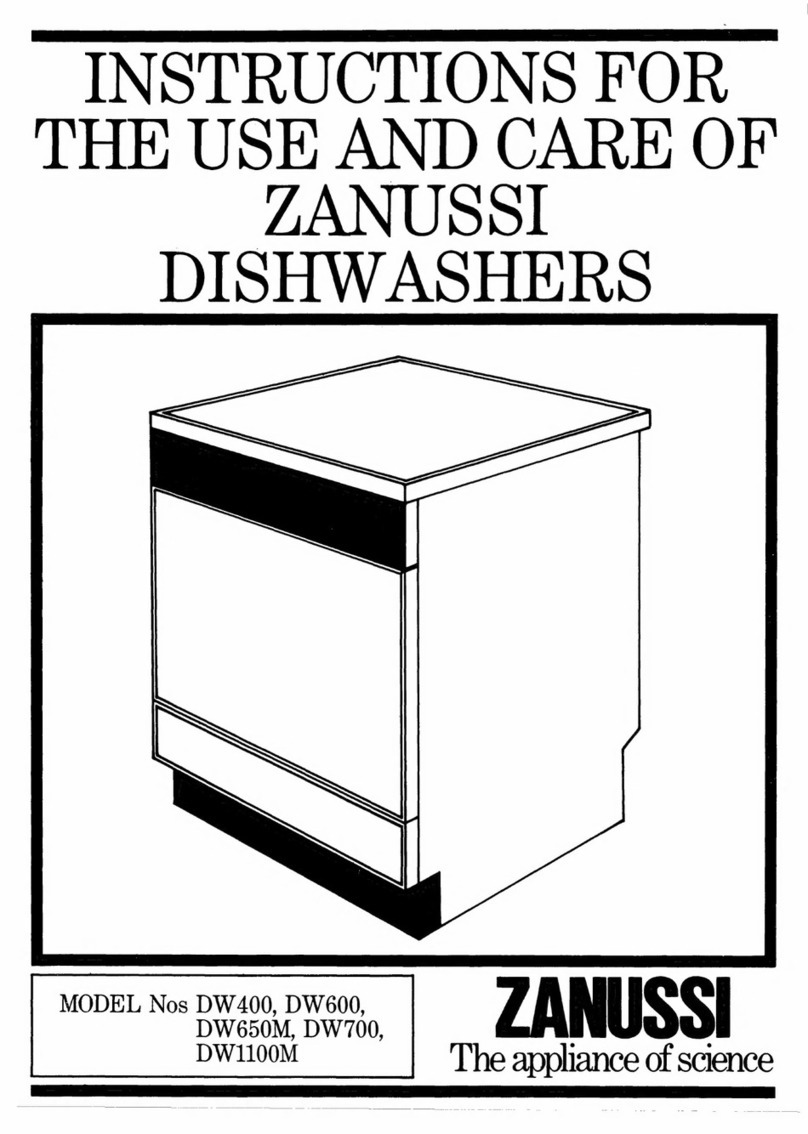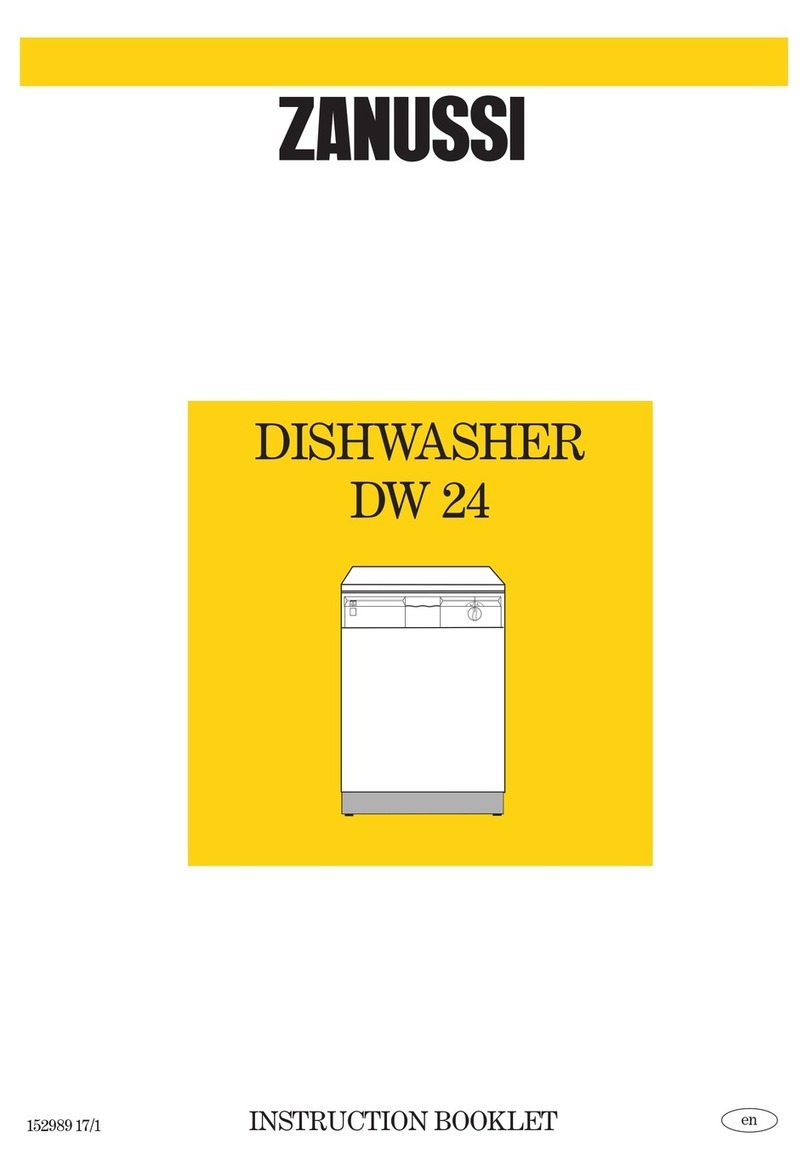Safety information
In the interest of your safety and to ensure the
correctuse,beforeinstallingandfirstusingthe
appliance, read this user manual carefully, in-
cluding its hints and warnings. To avoid
unnecessary mistakes and accidents, it is im-
portant to ensure that all people using the
appliancearethoroughlyfamiliarwithitsopera-
tion and safety features. Save these instruc-
tions and make sure that they remain with the
applianceifitismovedorsold,sothateveryone
usingitthroughitslifewillbeproperlyinformed
on appliance use and safety.
Correct use
• Thisdishwasherisonlyintendedforwashing
household utensils suitable for machine
washing.
• Do not put any solvents in the dishwasher.
This could cause an explosion.
• Knives and other items with sharp points
must be loaded in the cutlery basket with
their points down or placed in a horizontal
position in the upper basket.
• Onlyuseproducts (detergent,salt andrinse
aid) suitable for dishwashers.
• Avoid opening the door whilstthe appliance
is in operation, hot steam may escape.
• Donottakeanydishesoutofthedishwasher
before the end of the dishwashing cycle.
• After use, isolate the appliance from the
power supply and turn off the water supply.
• This product should be serviced only by an
authorisedserviceengineer,andonlygenu-
ine spare parts should be used.
• Undernocircumstancesshouldyouattempt
to repair the machine yourself. Repairs car-
riedoutbyinexperiencedpersonswillcause
injury or serious malfunctioning. Contact
your local Service Force Centre. Always in-
sist on genuine spare parts.
General safety
• Dishwasherdetergentscan causechemical
burns to eyes, mouth and throat. Could en-
danger life! Comply with the safety instruc-
tions of the dishwasher detergent
manufacturer.
• Thewaterinyourdishwasherisnotfordrink-
ing. Detergent residues may still be present
in your machine.
• Ensure that the door of the dishwasher is
alwaysclosedwhenitisnotbeingloadedor
unloaded.Inthiswayyouwillavoidanybody
tripping over the open door and hurting
themselves.
• Do not sit or stand on the open door.
Child safety
• This appliance is designed to be operated
by adults. Don’t allow children to use the
dishwasher unsupervised.
• Keepall packagingwellawayfromchildren.
There is risk of suffocation.
• Keep all detergents in a safe place out of
children’s reach.
• Keep children well away from the
dishwasher when the door is open.
3

